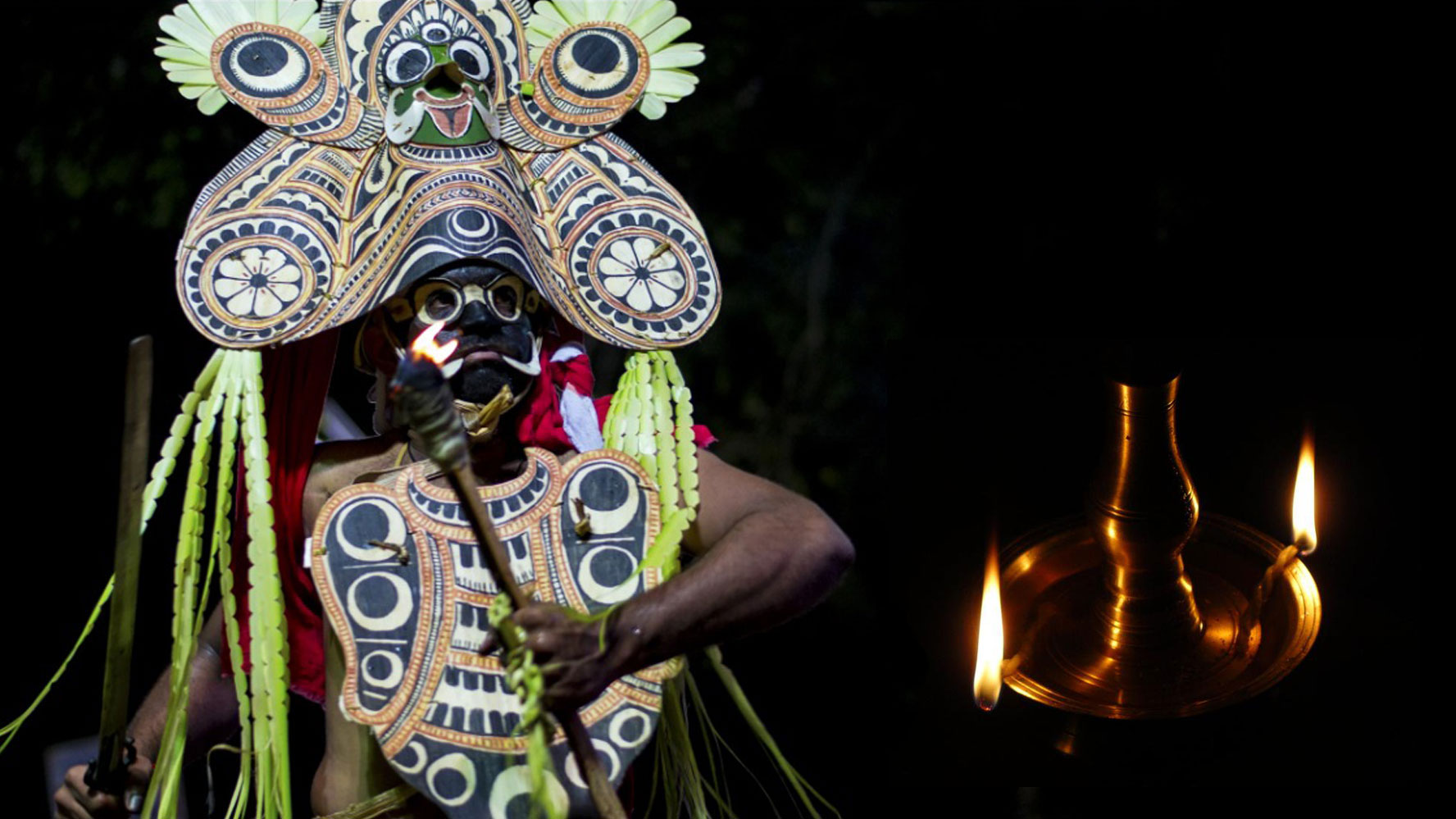Musical Instruments used in Padayani
Very defferent instruments are using in padayani. Some Instrument used for Padayani only.
Thappu
It is considered as an Asuravadya. A round frame is cut made from the hardwood of Jacktree. One side of the frame is covered with buffalo hide using gum paste of ‘Panachicka’ and stone powder. This instrument can be made beatable by a process called Thappukachu. Both the frame and hide are warmed in a flame of firewood for hours. After that it was brushed with the leaves of a herb named ‘panal’ and allowed to cooldown slowly. The process of warming and cooling down are repeated several times. If the Thappukachu is done properly this instrument produces the sound of a bell. Thappu is the most important vadya of padayani.
Thappumelam
Thappumelam commences after Ezharanazhika (3 hours) since sunset. The artist sits on the ground stretching his right leg. Thappu is placed on the knee. Left leg thumb is properly utilized to keep the instrument is right position. Both the hands are used to beat Thappu Beating style and beating zones of thappu vary with thalakshara. ‘Kakara’ are beaten with lefthand while thakara are by right hand. Thappumelam advances in a pattern, Ganapathy, Koottakkappoli, Jeeva, Valyaganapathy, Naluchempada, urulukayyu, thomthiminthaka, Edayam, Thakathakkan, Thakathintheem. Systematic pattern of vaythari (orally renounced musical pattern) are strictly followed. If there occur some error in Jeevabeating beloved, result is nothing short of death. Kaimani accompanies thappumelam.
Valyamelam
It can be described as a joint performance of various instruments like chenda, Thappu, Kaimani, Thamil, Kurumkuzhal. Valyamelam is often seen associated with Kurampala padayani alone. This is also done after ezharanazhika since sunset. Towards end of the ‘kalayam’ of valyamelam kappoli commences. Use of various Aksharakala (Time bound beating), Cholkkettu and Thalakriya are the features of valyamelam. Now days artists aware of the proper performance of valyamelam are undoubtedly few in number.
Chenda
On specify occasions, chenda is beaten in kolamthullal for Kalankolam, Arakkiyakshi, Mayekshi, Antharayakshi and Kurathi; chenda is essential. At the time when kolam is brought to stage and also during the ceremonial travel to chiramudi this asuravadya is used. In the lattercase veekkan chenda is also beaten.
Para
It is resembles Udukku in shape and can be beaten on both sides with thin rods. Para is beaten by velan when the devotee rolls in thorny cane sound of conch accompanies para vadya.
Kumbham
They are bamboo sticks of varying length and are often used in Kuravarkali. Head of stick is beaten on the flat surface of a stone to produce sound.


